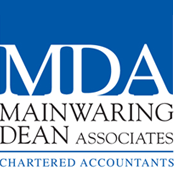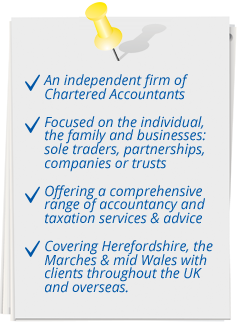A guide to the 2015 Budgets
Security was the theme of the July Budget, and growth and fairness were the themes of the March Budget. You can read the individual measures below:
| Rates and
allowances |
2015/16 £ |
2016/17 £ |
2017/18 £ |
| Income tax rates (non-dividend income) |
|||
| 10% lower rate tax - savings rate only | Up to 5,000 | Up to 5,000 | Up to 5,000 |
| 20% basic rate tax | Up to 31,785 | Up to 32,000 | Up to 32,400 |
| 40% higher rate tax | 31,785-150,000 | 32,000-150,000 | 32,400-150,000 |
| 45% additional rate tax | Above 150,000 | Above 150,000 | Above 150,000 |
| Personal allowance | |||
| Personal allowance for those born after 5 April 1948 | 10,600 | 11,000 | 11,200 |
Marriage allowance
For the current year the transfer of £1,060 of a personal allowance to a spouse or partner is allowed where the transferor’s income is less than £10,600 and the recipient doesn't pay tax at the higher or additional rate.
Dividend taxation – all change from April 2016
The tax regime for dividends will change for 2016. This sees the abolition of the dividend tax credit, a dividend tax-free allowance and tax rates for dividend receipts.
Dividend tax allowance £5,000
Basic rate taxpayers 7.5%
Higher rate taxpayers 32.5%
Additional rate taxpayers 38.1%
Corporation tax
As announced previously, the rate of corporation tax is 20% from April 2015. The rate will be cut to 19% from 1 April 2017 and to 18% from 1 April 2020.
Large company tax payments
A company with profits in excess of £20m will, from April 2017, be required to pay tax instalments in the third, sixth, ninth and 12th months of their accounting period instead of the current month seven requirement.
Employment Allowance
From 6 April 2015 Employment Allowance relief will be available to individuals who employ care and support workers. Employers will be entitled to deduct up to £2,000 per annum from their liability to pay secondary
class 1 (‘employer’) national insurance contributions (NICs).
From 6 April 2016 the Employment Allowance relief will increase to £3,000 per annum.
Annual Investment Allowance:
Permanent increase to £200,000 from January 2016
The maximum amount of the Annual Investment Allowance (AIA) was temporarily increased to £500,000 from April 2014 until 31 December 2015, after which it would have returned to £25,000. This new measure permanently increases the amount of the AIA to £200,000 from 1 January 2016. Where a business has a chargeable period that spans that date, the transitional rules will apply.
Farmers’ averaging
Changes to farmers’ averaging highlight that from April 2016 the period over which they can average will be increased from the current two years to five years. The government states that it will engage with stakeholders later in the year on the detailed design and implementation.
Peer-to-peer bad debt relief
If a peer-to-peer (P2P) loan is not repaid, then the loss that the lender suffers on that loan will be set against the income that they receive on other P2P loans before that income is taxed. Legislation is proposed for the Finance Bill 2016, but relief is available for the current tax year.
Increasing rent-a-room relief from £4,250 to £7,500 per year from 6 April 2016
The level of rent-a-room relief, which provides for tax-free income that can be received from renting out a room or rooms in an individual’s only or main residential property, will be increased from £4,250 to
£7,500 per year. It also increases the level if an individual rents out rooms in a guest house, bed and breakfast or similar, provided that it is their main residence. The increase to the rent-a-room limit
will apply from 6 April 2016.
Restricting
finance cost relief for individual landlords from April 2017
This measure will restrict relief for finance costs on residential properties to the basic rate of income tax. To give landlords
time to adjust, the government will introduce this change gradually from April 2017 over four years.
Landlords will no longer be able to deduct all of their finance costs from their property income
to arrive at their property profits. They will instead receive a basic rate reduction from their income tax liability for their finance costs.
IR35
HMRC has been asked ‘to start a dialogue with businesses on how to improve the effectiveness of existing IR35 legislation’. The government wishes to protect the Exchequer and improve fairness in the system.
Permanent
non-dom status
Anyone resident in the UK for 15 out of the last 20 years will be considered UK domiciled for tax purposes. This applies from April 2017.
VAT
| 2014/15 £ |
2015/16 £ |
|
| Standard rate | 20% | 20% |
| Registration threshold | 81,000 | 82,000 |
| Standard rate |
79,000 |
80,000 |
Seed
Enterprise Investment Scheme (SEIS)
The scheme was not permanent, and runs until 5 April 2017. The investment limit for a qualifying individual in a fiscal year is £100,000 and cannot
claim tax relief until the company has spent at least 70% of the money invested. The scheme will be affected by the new rules, which include the requirement for companies to be less than 12 years old when
receiving their investment.
Changes
to pensions
People with defined contribution schemes who are at least 55 years old can make withdrawals up to the value of the funds invested in the scheme. The first 25% will be tax
free. An individual who makes a withdrawal will be restricted to making future pension contributions of no more than £10,000.
The lifetime allowance for pension contributions will reduce from
£1.25m to £1m from 6 April 2016.
Pension
tapered annual allowance from April 2016
Legislation in Summer Finance Bill 2015 introduces a tapered reduction in the annual allowance from 6 April 2016, for those with an 'adjusted
income' of over £150,000.The rate of reduction in the annual allowance is by £1 for every £2 that the adjusted income exceeds £150,000, up to a maximum reduction of £30,000. These rules provide for an annual
limit on tax-relieved pension savings which is currently £40,000 to be reduced to £10,000. The carry forward of unused annual allowance will continue to be available, but the amount available will be based
on the unused tapered annual allowance.
Annual
Tax on Enveloped Dwellings
From 1 April 2015 the annual charges for the Annual Tax on Enveloped Dwellings (ATED) will be increased by 50% above inflation (Consumer Prices Index).
| 2014/15 £ |
2015/16 £ |
|
|
Annual Tax on Enveloped Dwellings (ATED) |
||
| More than £1m but not more than £2m |
n/a |
7,000 |
|
More than £2m but not more than £5m |
15,500 |
23,350 |
| More than £5m but not more than £10m | 35,900 | 54,450 |
| More than £10m but not more than £20m | 71,850 | 109,050 |
| More than £20m | 143,750 | 218,200 |
Inheritance
Tax:
Main residence nil-rate band and existing nil-rate
band from April 2017
This measure introduces an additional nil-rate band when a residence is passed on death to a direct descendant. This will be £100,000 in 2017-18, £125,000 in 2018-19,
£150,000 in 2019-20 and £175,000 in 2020-21. It will then increase in line with the Consumer Prices Index (CPI) from 2021-22 onwards. Any unused nil-rate band will be able to be transferred to a surviving
spouse or civil partner.
There will be a tapered withdrawal of the additional nil-rate band for estates with a net value of more than £2m. This will be at a withdrawal rate of £1 for every £2
over this threshold. The existing nil-rate band will remain at £325,000 from 2018-19 until the end of 2020-21.





